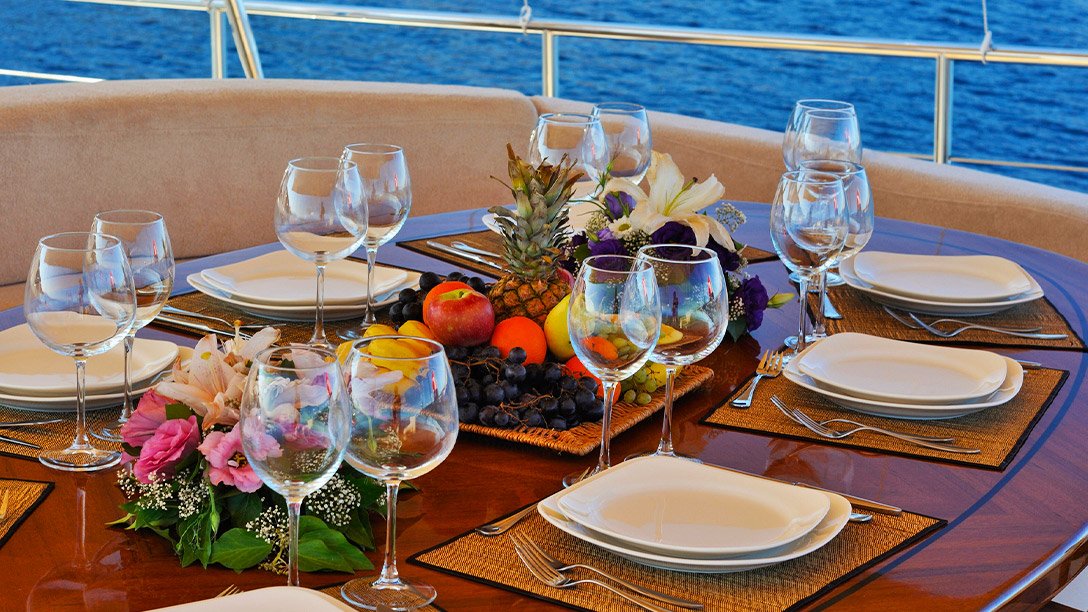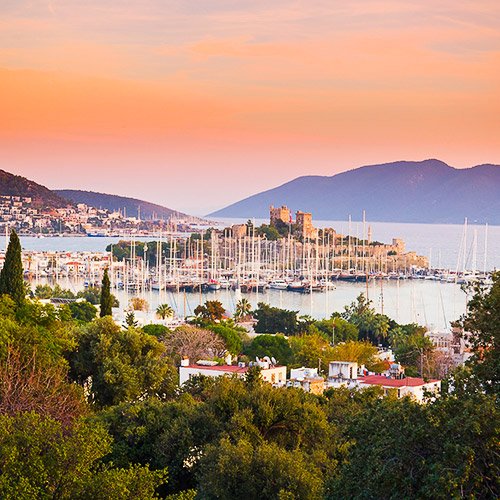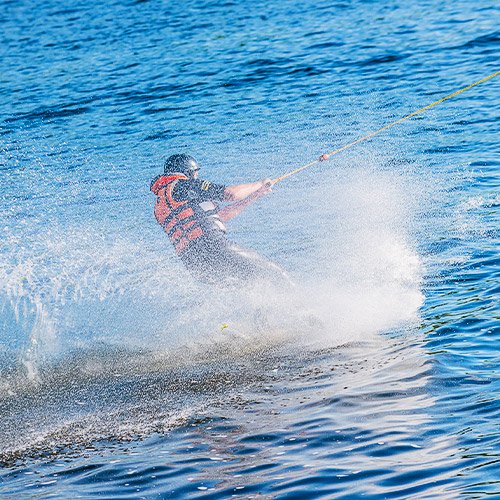When you plan the sailing itinerary, you should also consider planning what to cook and from where you can provision the yacht.
Ask the crew about their preferences
If the food is not good, your holiday can quickly turn into a forgettable disaster if the crew members are not getting the food they love. That's why it is very important to ask everybody aboard about their preferences in term of food, and you should consider all 3 meals and the snacks in between (don’t forget about allergies). Another thing to consider when noting down what people love to eat, is that nobody likes to eat the same things every day, and will also help you build the ingredients list. You should also look for diversity when it comes to drafting the daily menu, so that is as less as possible repetition.
Keep in mind that you should also devise the daily menu so that is not only tasty, but also healthy and nutritious.
Same things apply also to beverages. Not everybody likes, for example, carbonated drinks. Keep a good selection of alcoholic and non-alcoholic beverages on board based on preferences.
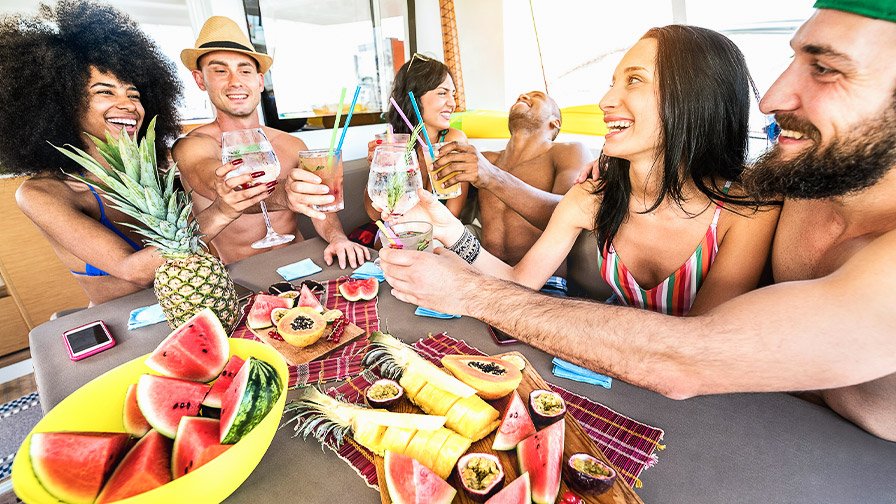
Crew preferences
capetanos.comCheck the amenities in the galley
Before planning the meals, it’s also important to check the amenities in the galley. For example, if you plan for barbeques and there is none onboard, then you should rethink the shopping list. Check the utensils and any other “tool” you need for cooking. Some people prefer to bring their own utensils, or shop for some. If you decide to buy disposable plastic cutlery, straws or cups, make sure you dispose of them in a plastic recycling bin.
Check the oven and the stove and if you charter the boat, make sure you ask if the gas cylinder was replaced and how long lasts. Speaking of gas, you need to be extra careful with gas on boats, so you need to know exactly where the gas shutoff valves are. Usually, the boats have a solenoid switch connected at the gas tank or a shutoff switch underneath the oven. When you are not cooking, the gas switch must stay in off position.
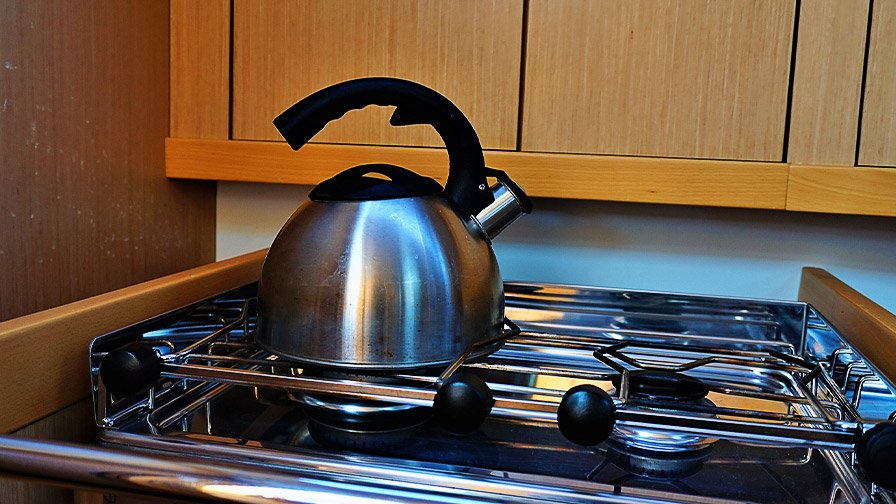
Galley on the boat
capetanos.comShopping list
Most probably each crew member would like something different, so it’s important to build the list in such a manner you don’t forget something. The best way it works for us is to split the list as follows:
- Fresh food includes everything that is perishable like meat, fruits, vegetables and dairy products.
- Canned/packed ingredients includes of course, everything that is packed or canned, from pasta to sauces. Keep in mind to buy also some tomatoes sauce, almost everybody loves pasta.
- Spices are to be bought according to your preferences and the meals you will cook. Because we said that diversity is important, you should consider buying Italian, Asian, Indian and Mediterranean spices.
- Pastry is another thing to consider. Everybody loves a croissant with coffee in the morning.
- Snacks are always handy and in much demand aboard any yacht, so make sure you cover all crew’s demands.
- Beverages are very important and in some cases are on top of the list, so make sure you buy a good selection of alcoholic and non-alcoholic drinks, according to preferences. Don’t forget to buy coffee, a skipper without the morning coffee is not a pleasant company.
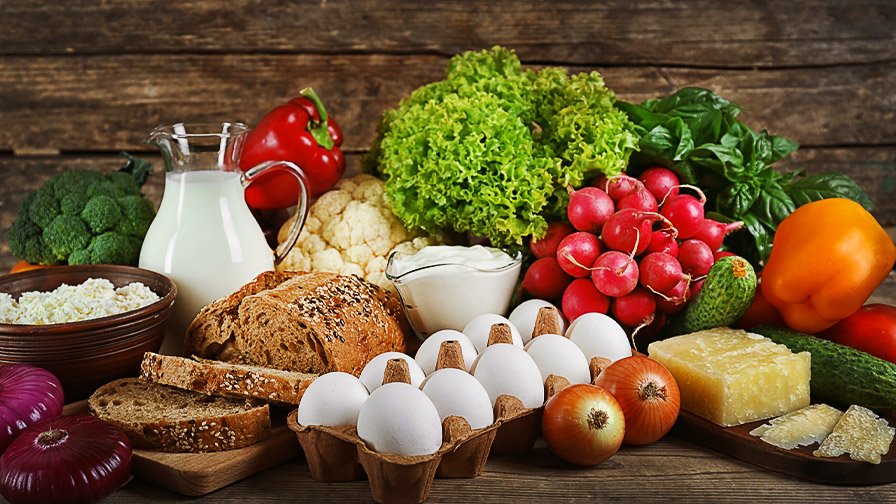
Shopping list
capetanos.comKeep the food fresh
This is also an important matter if you plan the food for an entire week or for a longer passage. Before going shopping, inspect the food storage compartments and cooler capacity and make sure that everything you plan to buy has a place on board.
One of the biggest issues is storing the meat, because it degrades fast during hot summer months. We use the vacuum bags for the meat, so it can last for one week in the cooler, or if you have a freezer, you can safely store it for longer periods of time. If you don’t have a cooler/freezer and stay on the safe side, you can buy canned meat.
Some vegetables lose their colour and flavour when kept in the freezer, so you should keep potatoes, onions and tomatoes in a cool, dry place. Green leaves are known to lose their freshness very quickly, so to keep your fresh greenies longer and fresher, store them in bags filled with a little air, then seal it tightly.
Use the perishable food first, so you can avoid throwing them away or even worse, someone getting food poisoning.
Not all beverages need to be kept cold and can be stored in the dedicated compartments. You can transfer them in the freezer when needed, or use ice, if you have an ice maker on board.

Fresh drinks
capetanos.comMenus
Best to build the menu is before your departure, and ideally plan it together with your friends and family. Doing so, it will be easier to build a daily menu, both healthy and nutritious.
1. Breakfast
Probably the most important meal of the day. For breakfast you can prepare a mix of eggs, sausages, bacon, tomatoes, cheese and fruits. Of course, don’t forget about coffee, tea or juice, depending on the crew’s preferences.
Find below one of our favourite omelette recipes:
Ingredients
- 4eggs
- 1 tablespoon mirin
- 1 tablespoon dark soy sauce
- half tablespoon of sugar
- 1 teaspoon of neutral oil
Directions
In a bowl, whisk until well mixed the eggs, mirin and soy sauce.
Heat the pan with one teaspoon of oil, then pour ¼ of the above mixture and tilt the pan until you get an even layer. After the layer is cooked, gently lift the edges and fold the layer until you have a rectangular omelette. Keep the cooked layer on the side of the pan and pour another ¼ of the mixture, to continue the previous layer. Repeat this step until you finish the other 2/4 parts.
Transfer the omelette to a cutting board and cut it in several pieces.
Place them on the plate with the cut size up so you can see the egg layers. Place some fresh slices of cucumber next to it and preferably serve it immediately.
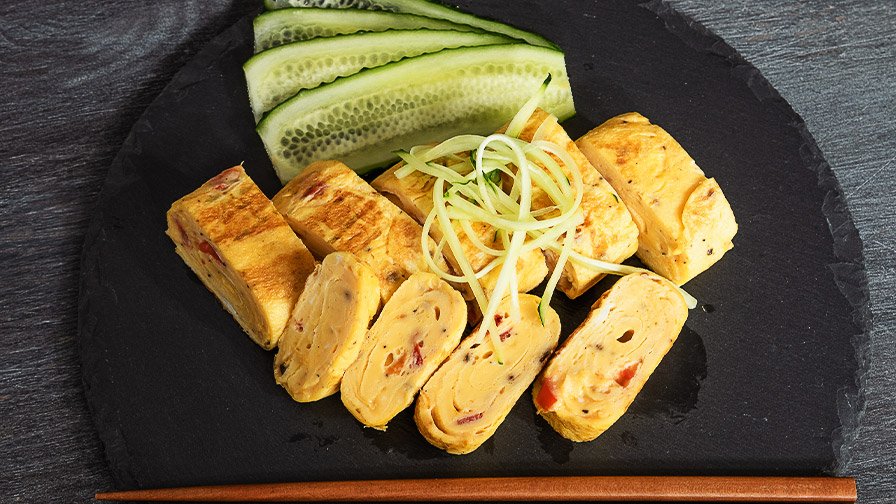
Rolled omelette
capetanos.com2. Lunch
During summer months, you should consider a light lunch. We recommend meals with chicken, vegetables, rice or even fresh fish if you love fishing and have the proper tools.
Even though is considered a summer starter, we love ceviche, because it’s easy to cook and works with almost any kind of fresh fish.
Ingredients
- fresh, skinless snapper, bass, halibut or other ocean fish fillets, cut into 0.5-inch dice
- 1.5 cups of fresh lime juice
- 1 medium white onion, chopped into 0.5-inch pieces
- 2 medium-large tomatoes, chopped into 0.5-inch pieces
- Fresh hot green chiles, stemmed, seeded and finely chopped (optional)
- 1/3 cup chopped cilantro, plus a few leaves for garnish
- 1/3 cup chopped pitted green olives (manzanillos for a typical Mexican flavour)
- 1 to 2 tablespoons extra-virgin olive oil (optional)
- Salt
- 3 tablespoons fresh orange juice or 1/2 teaspoon sugar
- 1 large or 2 small ripe avocados, peeled, pitted and diced
- Tostadas, tortilla chips or saltine crackers, for serving
Directions
In a 1.5-quart glass or a bowl, combine the fish, lime juice and onion. The juice should cover the fish and allow it to float freely (too little juice means unevenly "cooked" fish). Cover and refrigerate for about 4 hours, until a cube of fish no longer looks raw when broken open, and then drain in a colander.
In a large bowl, mix together the tomatoes, green chiles, cilantro, olives and optional olive oil. Stir in the fish and season with salt, usually about half a teaspoon. Add the orange juice or sugar, depending on your preferences. Just before serving, gently stir in the diced avocado.
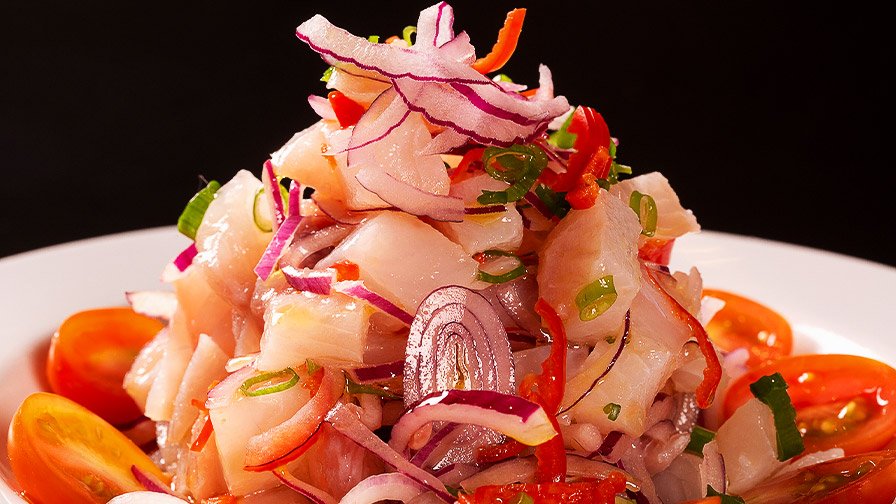
Ceviche recipe
capetanos.com3. Dinner
After a day at sea, the best moment to relax is at sundown, have a glass of wine and a good meal. Dinner can be more elaborate and a good opportunity for using the spices you bought, and there are many alternatives to avoid repetition. You can choose from Italian, Asian, Indian, American and Mediterranean cuisine, from pasta to Caesar Salad or barbeque, if you have the necessary amenities.
Pasta carbonara is one of those simple, easy-to-make dinners, that everybody loves.
Ingredients
- Bacon
- Water
- Garlic
- 1 pack of spaghetti
- Grated Parmesan
- Eggs
- Salt
- Pepper
- Fresh parsley
Directions
Add the bacon to a skillet and bring to a simmer and continue simmering until all the water is evaporated, then continue to cook the bacon until it becomes crispy. Remove the bacon from the pan and keep it on a plate.
Cook the garlic in that same skillet until it gets golden brown, then add it (including the bacon fat from the pan) to a bowl and mix well with the eggs, egg yolk, parmesan and pepper.
Meanwhile, cook the spaghetti al dente. Once cooked, drain the pasta and reserve 1 cup of the cooking water. Slowly pour the hot cooking water into the egg mixture. Then pour over the hot pasta and toss to coat. Add the bacon and mix well.
Let the pasta rest for a few minutes, tossing frequently until the carbonara sauce thickens, then serve immediately with a sprinkle of fresh parsley.
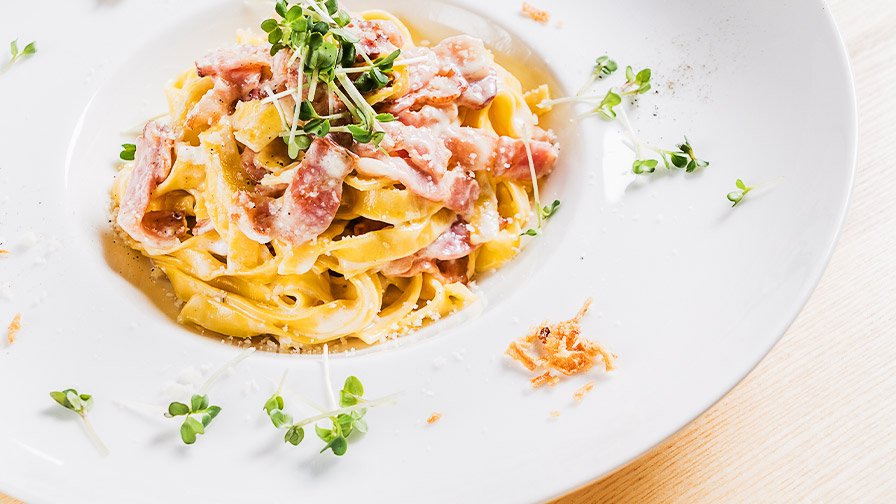
Pasta carbonara
capetanos.comAs you can see, with good planning and some creativity, cooking on a yacht can be fun and it can turn into an exciting experience for everybody.
Keep in mind that perishable ingredients should be consumed first and the recipes should be simple and tasty, in such a way that everybody onboard stays well fed and happy.
